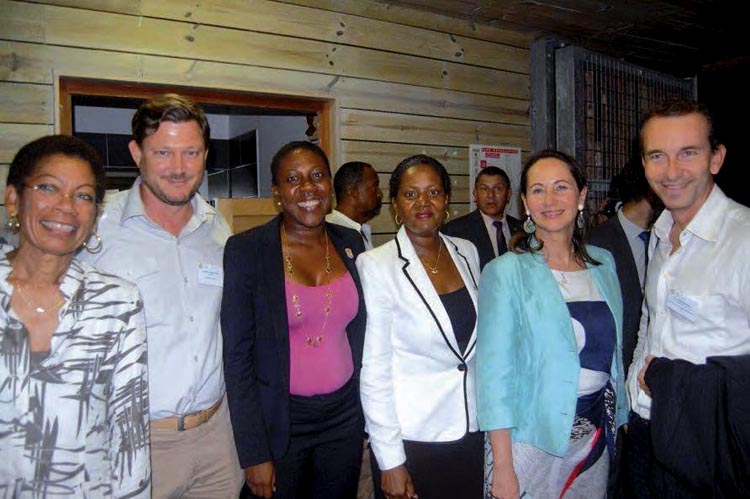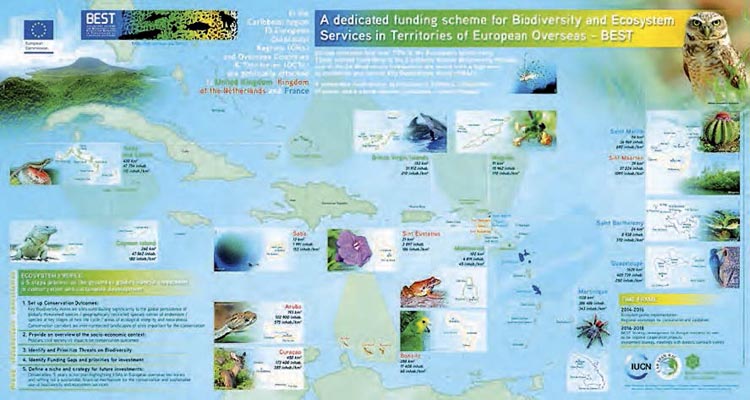The European Union, which comprises 9 Outermost Regions and 25 Overseas Countries and Territories worldwide, has placed the protection of its exceptional biodiversity at the top of its list of priorities, as seen in the creation of the BEST project, coordinated in the Caribbean by the SPAW RAC and the Réserve Naturelle of Saint Martin. The goal is to establish an inventory of the biodiversity and its challenges in terms of conservation in each of these European territories and to guarantee the continuation of European funding, which often is lacking at the moment. Along the same lines, the second International Conference On Biodiversity and Climate Change in Overseas Europe, which was held in Guadeloupe on October 22-25, 2014, attracted 200 attendees who represent the who’s who of leaders, managers, and scientists concerned by these challenges, including Ségolène Royal and George Pau-Langevin, respectively minister of the environment, and overseas minister. Co-organized by France, the Bristish Virgin Islands, the association of overseas countries and territories, the Region of Guadeloupe— which led the conference for the Outermost Regions—the Secretary for the Convention on Biological Diversity, the International Union For Conservation of Nature (IUCN), and the European Commission, this meeting allowed all of these territories—British, Spanish, Portuguese, Danish, and French—to work together in a series of five workshops that allowed them to discuss such subjects as the decline in the biodiversity, research, the economic impact of natural environments, the mobilization of financial resources, and of course the effects of climate change. This work resulted in a roadmap that defines the actions that are required over the next few years to respond efficiently to the challenges of biodiversity and to climate change.
Romain Renoux, the head of regional cooperation for the Réserve and for the coordination of the BEST project in the Caribbean, took the opportunity to meet his counterparts from around the region and to share the most possible information with them


















